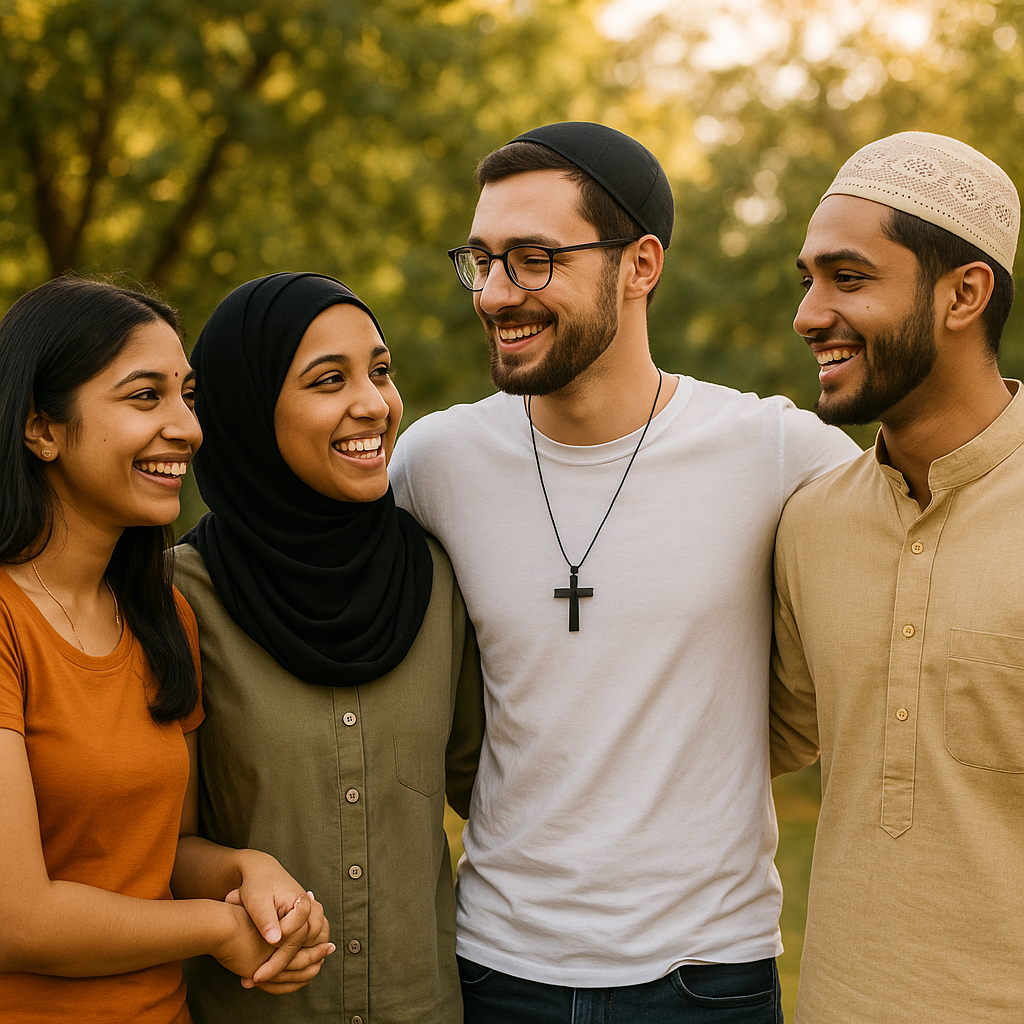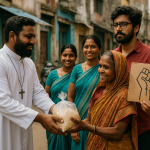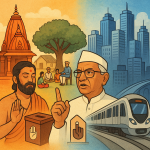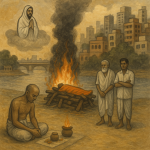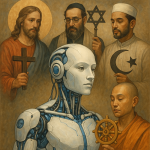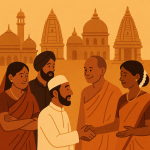Cross-Faith Youth Networks: What Happens When Hindus, Muslims, and Christians Connect
India’s young generation is growing up in a time of both deep religious awareness and global connectivity. While religion continues to influence identity, a quiet yet powerful movement is unfolding — one where Hindu, Muslim, Christian, Sikh, Jain, and Buddhist youth are coming together through education, art, social work, and digital platforms. These cross-faith youth networks are not just dialogues about tolerance; they are active collaborations that aim to rebuild trust, break stereotypes, and create shared visions for a more inclusive India.
A Generation Beyond Boundaries
The youth of today are more connected than any previous generation. Through universities, workplaces, travel, and the internet, they interact daily across religious and cultural lines. Many young Indians find it natural to celebrate Diwali with Hindu friends, attend Iftar dinners during Ramadan, or participate in Christmas charity drives. This cultural blending is gradually shaping a new social fabric where religious identity coexists with shared civic values.
For many, religion is no longer about separation but self-expression — a way to find meaning and community in a diverse world. When young people network beyond faith boundaries, they discover how similar their aspirations really are: a desire for opportunity, peace, and belonging.
From Dialogue to Collaboration
In cities like Delhi, Bengaluru, and Hyderabad, student-led initiatives are promoting interfaith understanding through workshops, debates, and art projects. Universities host “Harmony Weeks” where youth from different religions share stories of faith and compassion. Startups and NGOs led by young founders often include members from varied backgrounds who focus on social good rather than sectarian identity.
Digital platforms have become a vital meeting ground. Instagram pages, YouTube channels, and podcasts run by young Indians explore how religion shapes daily life — without the bias of older generations. Online spaces allow respectful conversations on sensitive issues like caste, conversion, or gender in religion. The language is new: empathetic, inclusive, and less bound by political agendas.
Breaking Stereotypes Through Shared Experiences
When Hindu, Muslim, and Christian youth work together, something deeper happens — stereotypes dissolve through lived experience. A Hindu volunteer organizing flood relief with Muslim peers sees compassion beyond community. A Christian student joining a Hindu prayer finds resonance in devotion. These shared acts of service and creativity humanize faith, replacing fear with friendship.
Sports clubs, social enterprises, and cultural collectives are among the most successful spaces for such interaction. Young Indians who play, learn, and create together are learning to see religion as diversity, not division. These experiences create ripple effects that go beyond individual friendships — they inspire families and communities to think differently too.
Challenges on the Path to Unity
Despite growing dialogue, cross-faith relationships still face resistance. Many young people encounter skepticism from elders or peers when they collaborate closely with members of another religion. Political polarization, social media misinformation, and identity-based narratives often make interfaith friendships seem “unpatriotic” or “unsafe.”
Dating or marrying across faiths remains particularly sensitive, with legal and social hurdles often turning personal choices into public controversies. Yet, youth continue to challenge these barriers. For many, love and friendship across religion represent not rebellion, but the truest expression of India’s pluralistic spirit.
The Role of Education and Social Media
Educational institutions are becoming crucial spaces for interfaith dialogue. Student exchanges, workshops on constitutional values, and shared service projects are helping youth see religion as a source of ethics, not division. When students from different faiths volunteer in rural schools, clean rivers, or mentor underprivileged children together, they discover common purpose.
Social media, despite its divisive potential, also holds immense power for peacebuilding. Many young influencers and educators are using platforms like Instagram and YouTube to share interfaith stories — from visiting each other’s places of worship to discussing common teachings like compassion, justice, and humility. These narratives challenge prejudice and remind audiences that India’s diversity is its strength.
Faith, Friendship, and the Future
What’s unique about this generation is their willingness to question and reimagine faith itself. Rather than rejecting religion, many young people are seeking to reinterpret it — focusing on its moral and humanitarian essence. When a Hindu and Muslim co-found a charity, or a Christian musician collaborates with Sikh artists on devotional songs, they are not erasing difference; they are celebrating it as creative energy.
Cross-faith youth networks are also giving rise to hybrid cultural identities. Interfaith poetry clubs, peace fellowships, and youth parliaments are platforms where spiritual and civic conversations meet. These networks show that young Indians are not waiting for top-down solutions — they are building peace from the ground up.
A New Social Vision
If religion once divided, today’s youth are proving it can also unite. By focusing on shared goals — education, environment, gender equality, and human rights — they are redefining what it means to live in a multi-faith democracy. The friendships they form, the initiatives they launch, and the empathy they practice may well become the foundation for India’s next social renaissance.
When Hindu, Muslim, and Christian youth network together, they create something more powerful than religious coexistence — they create mutual respect. In their classrooms, offices, and online communities, they are dismantling centuries-old mistrust not through debate, but through collaboration.
~Religion World Bureau

